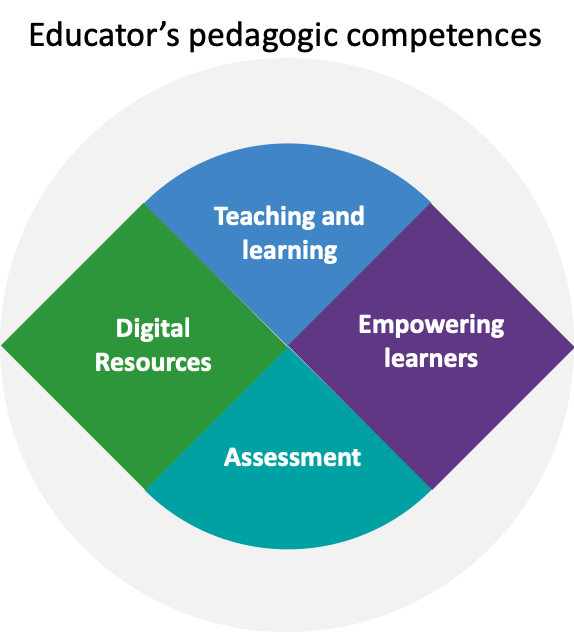Introduction
Digitalization has increasingly introduced a new dimension in educators’ pedagogical skills and competences which we have chosen to call Pedagogical Digital Competence (PDC).
“Pedagogical Digital Competence refers to the ability to consistently apply the attitudes, knowledge and skills required to plan and conduct, and to evaluate and revise on an ongoing basis, ICT-supported teaching, based on theory, current research and proven experience with a view to supporting students’ learning in the best possible way”. Pedagogical Digital Competence thus relates to knowledge, skills and attitudes, and to technology, learning theory, subject, context and learning, and the relationships between these. PDC is thus a competence that is likely to develop the more experienced a teacher becomes.
Additionally, and according to the SAMR model (Substitution, Augmentation, Modification and Redefinition, the change in the methodology due to the digitalization can be categorized as follows:
IMPROVEMENT:
- Substitution: Technology is used to substitute a preexistant element, but with no methodological change.
- Augmentation: Technology is applied as a substitute of an existing model, but implementing significant functional improvements..
TRANSFORMATION:
- Modification: Using technologies, there is a redefinition of the tasks, producing a methodological change based on the ICT.
- Redefinition: New learning environments are created, notably improving the quality of education.In this chapter will analyse the Educators’ pedagogic competences of the DigiCompEdu framework.

The pedagogic competences of DigCompEdu are focus in the following 4 areas:
Area 1: Professional Engagement
Using digital technologies for communication, collaboration and professional development.
Area 2: Digital Resources
Sourcing, creating and sharing digital resources.
Area 3: Teaching and Learning
Managing and orchestrating the use of digital technologies in teaching and learning.
Area 4: Assessment
Using digital technologies and strategies to enhance assessment.
Area 5: Empowering Learners
Using digital technologies to enhance inclusion, personalisation and learners’ active engagement.
The core of the DigCompEdu framework is defined by Areas 2-5. Together these areas explain educators’ digital pedagogic competence, i.e. the digital competences educators need to foster efficient, inclusive and innovative teaching and learning strategies. Areas 1, 2 and 3 are anchored in the stages characteristic of any teaching process, whether supported by technologies or not. The competences listed in these areas detail how to make efficient and innovative use of digital technologies when planning (Area 2), implementing (Area 3) and assessing (Area 4) teaching and learning. Area 5 acknowledges the potential of digital technologies for learner-centred teaching and learning strategies. This area is transversal to Areas 2, 3 and 4 in the sense that it contains a set of guiding principles relevant for and complementary to the competences specified in these areas.
The added value of the DigCompEdu framework is that it provides:
- a sound background that can guide policy across all levels;
- a template that allows local stakeholders to move quickly on to developing a concrete instrument, suited to their needs, without having to develop a conceptual basis for this work;
- a common language and logic that can help the discussion and exchange of best practices across borders;
- a reference point for Member States and other stakeholders to validate the completeness and approach of their own existing and future tools and frameworks.
